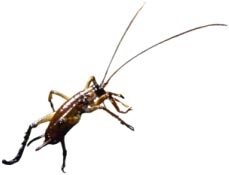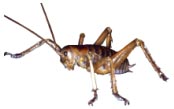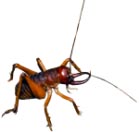Weta
|
Weta are insects which are found only in New Zealand. Below are photographs of four types of weta.
Here are three other types of weta.
|
||||||||||||
| a) |
Which weta is the tree weta most similar to? ____________________
Give two reasons why these weta are similar. |
|||||||||||
| b) |
Weta belong to the animal group known as insects. What are two features of weta that show that they belong to the group insects?
|
|||||||||||
| c) |
Carefully explain two features that weta have in common with each other. (Do not use the answers you gave for question b)).
|
|||||||||||





